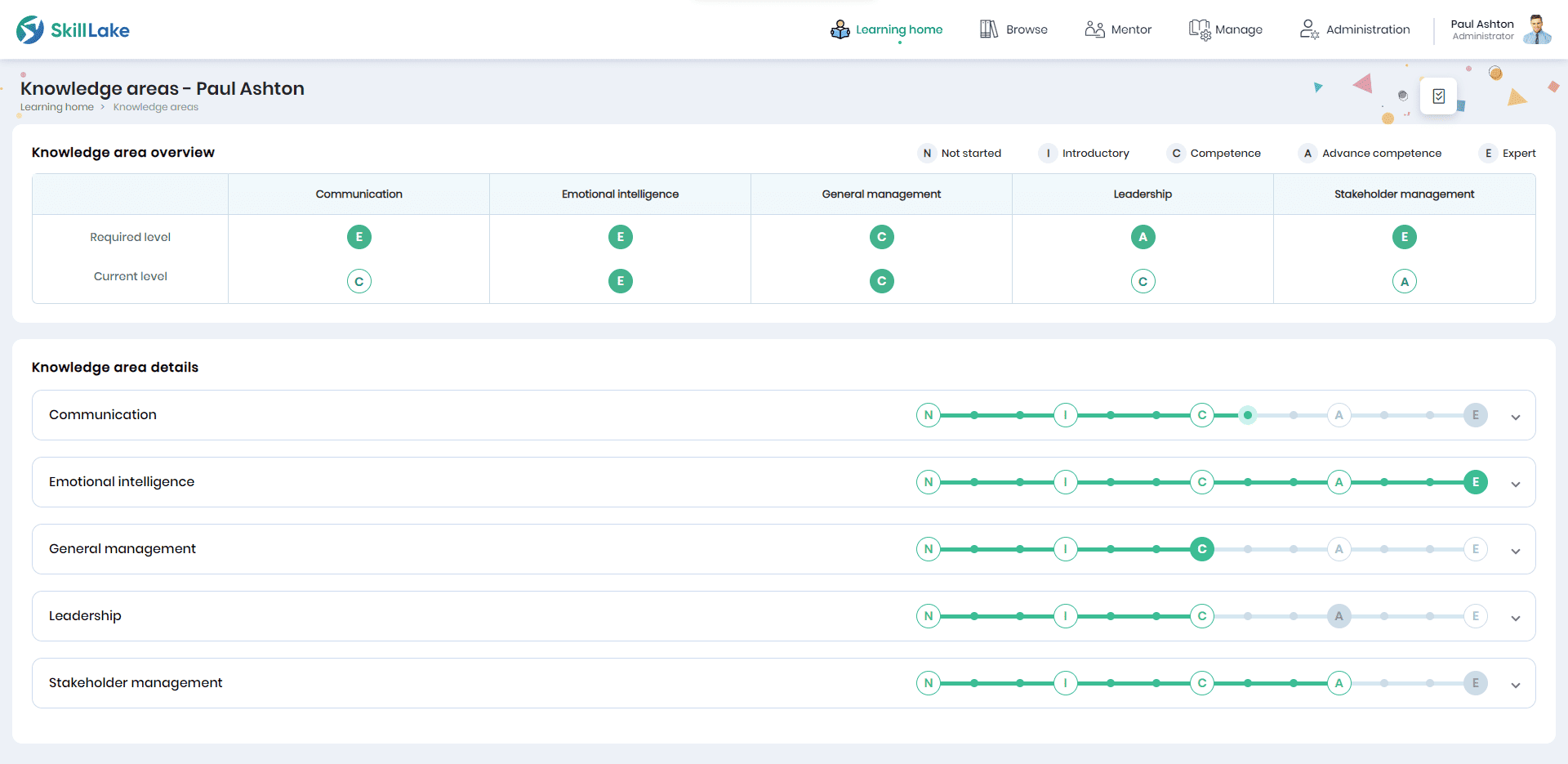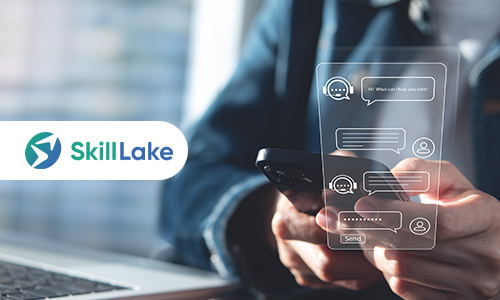The Role of L&D Teams in Getting Internal Mobility Right

Traditionally, employees were expected to remain in their initial roles despite outgrowing them or showing interest in other business areas. However, HR leaders have had to reassess their strategies due to increasing talent shortages and changing consumer expectations. They now recognize that strategies on top of external hiring are needed to bridge skill gaps effectively. As a response, leaders are now focusing more on internal development and mobility within their workforce. They are implementing learning and development pathways to empower existing employees to acquire the skills needed for the evolving demands of the future workplace. This helps companies adapt to the tight talent market and create a more dynamic and resilient workforce. According to LinkedIn’s 2023 Future of Recruiting Report, 75% of recruiting pros say internal recruiting will be an essential factor shaping talent acquisition over the next five years. And a recent survey of nearly 3,000 C-suite executives showed that CEOs consider internal mobility a top priority.
What is internal mobility?
Internal mobility or employee mobility refers to the deliberate movement of employees within an organization, horizontally and vertically. Effective internal mobility strategies are designed to inspire individuals to embrace fresh growth prospects that harmonize with their long-term career aspirations as well as the strategic objectives of the business.
At its core, internal mobility entails the establishment of a framework within organizations that facilitates greater agility in talent deployment, transcends traditional departmental boundaries, and dismantles any inclination towards hoarding talent.
Why is internal mobility important?
It is a win-win for organization and employees.
Utilizing internal mobility gives organizations the talent they need without paying the proof. Hiring employees familiar with the business streamlines onboarding processes reduces hiring costs, and ensures optimal resource utilization.
Internal mobility fosters individual growth and satisfaction and cultivates a dynamic and inspiring workplace culture. Employees are empowered to pursue their career aspirations within the company by providing them opportunities for skill development and role transitions, leading to increased engagement, morale, and retention rates. Moreover, internal mobility promotes knowledge sharing across teams, enhancing collaboration and innovation throughout the organization. When employees witness their peers advancing and succeeding in various roles, it instills a sense of possibility and motivation, creating a ripple effect of ambition and achievement across the workforce. As a result, prioritizing the talent mobility framework benefits individual career growth and contributes to establishing a vibrant and empowering organizational culture where continuous growth and development are celebrated.
The Role of L&D Teams in Getting Internal Mobility Right
L&D (Learning and Development) teams play a pivotal role in facilitating talent mobility in the workforce.
Collaboration for Strategic Alignment
L&D leaders must partner to identify business goals and skills gaps. By working closely with senior leadership and HR functions like Talent Acquisition, they gain insights into the strategic roadmap and workforce-planning strategies. This collaboration ensures that skill-building efforts align with current and future organizational needs.
Connecting Career Aspirations with Business Goals
Understanding employees’ career aspirations is crucial for adequate internal mobility. L&D teams should spend time understanding individual and organizational needs to create learning paths aligning personal growth with business objectives. By illustrating how acquiring new skills can contribute to personal and organizational development, L&D fosters greater engagement among employees.
Emphasizing Manager Support
Manager support is integral to the success of internal mobility efforts. L&D teams must advocate for manager involvement in skill-building and career development discussions. By framing internal mobility as a moment of growth rather than loss, managers are encouraged to support employees seeking new opportunities within the organization. Highlighting the benefits of internal mobility, such as access to proven talent and improved cross-team collaboration, reinforces the value proposition for managers.
Measuring and Tracking Impact
As internal mobility initiatives evolve, L&D teams play a crucial role in measuring and tracking their impact on the business. This involves collaborating with People Analytics partners to understand how learning and skill-building contribute to talent mobility, engagement, and retention. By quantifying the number of business-critical roles filled by internal talent and accelerating the leadership-succession pipeline, L&D demonstrates its contribution to organizational success.
How do you rethink your internal mobility strategy?
Identify Existing Skill Sets
Identifying and utilizing employees’ existing skill sets for internal mobility is a valuable strategy for organizational growth and employee development. Conduct a thorough assessment of the skills and competencies of employees. Once the employee skill sets are identified, map these skills to roles and departments leveraging these/similar skill sets within the organization. Look for matches between employees’ current skills and the requirements of other positions or projects. A Performance Management Ready Learning Management System (LMS) will help organizations to conduct training programs, and evaluate their effectiveness. This will help organization’s to boost productivity and help employees excel in their roles.

Launch Awareness Campaign
Communicate the importance of internal mobility and its benefits to employees and the organization. Use email newsletters, intranet announcements, and team meetings to spread the message effectively.
Training and Resources
Develop a comprehensive training program tailored to address skill gaps identified in step one. This could include workshops, online courses, or access to external resources. Additionally, create a repository of self-directed learning resources and tools employees can utilize.
Career Development Conversations
Encourage regular one-on-one discussions between employees and managers to explore career aspirations, identify developmental opportunities, and align individual goals with organizational needs. Provide managers with training on how to facilitate these conversations effectively.
Skill Development Opportunities
Offer various skill development opportunities such as cross-functional projects, job rotations, and mentorship programs. Ensure these opportunities are accessible to all employees and actively promote participation.
Feedback Mechanisms
Implement a feedback mechanism where employees can provide input on their experiences with internal mobility initiatives. Use this feedback to improve and refine the program continuously.
Recognition and Rewards
Establish a system to recognize and reward employees actively participating in internal mobility programs, demonstrating skill development, and contributing to the organization’s success.
Evaluation and Adjustment
Regularly evaluate the effectiveness of the internal mobility program by analyzing metrics such as participation rates, skill development progress, and employee satisfaction. Use this data to make adjustments and improvements as needed.
Ongoing Communication
Maintain open and transparent communication about the progress of the internal talent mobility program, highlighting success stories and lessons learned. Encourage ongoing dialogue between employees, managers, and HR to ensure continuous improvement and alignment with organizational goals.
Conclusion
Internal mobility is vital to talent management, extending beyond mere employee reassignment. It requires continual attention and investment. Organizations can utilize internal mobility to enhance employee engagement, foster innovation, and achieve business objectives through effective measurement strategies and monitoring emerging trends. When executed effectively, internal mobility is a mutually beneficial tool that drives organizational success.
Build a culture of continuous learning with Skill Lake’s state-of-the-art people development platform. Give your employees professional training to help them excel in their job roles and propel your business to greater efficiency and success.
Start Today

Aarathy Jayakrishnan
Aarathy is an e-learning professional and enthusiast with a keen understanding of learning and development concepts. She writes insightful content, unraveling the possibilities that e-learning holds, and strives to make education open for all.